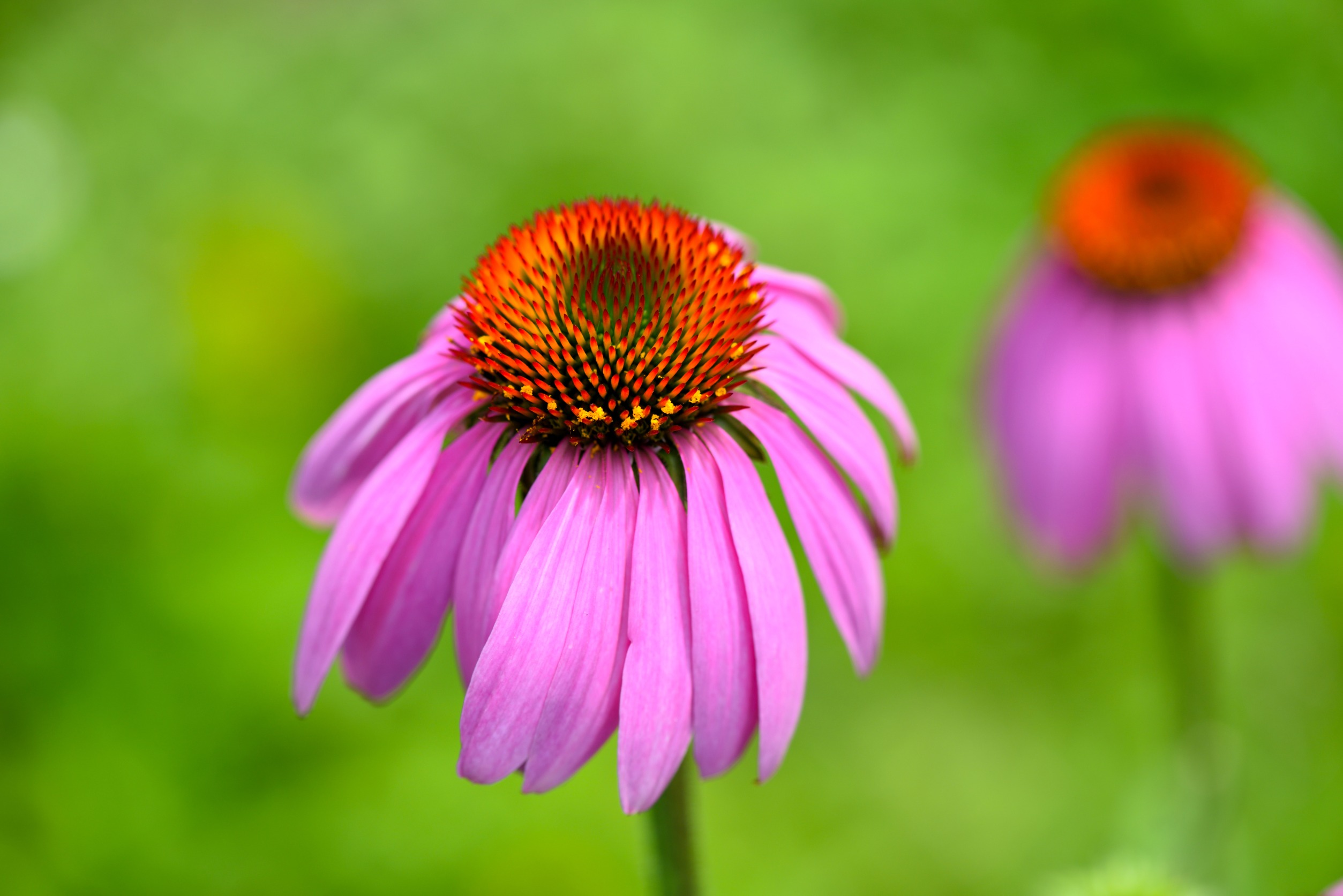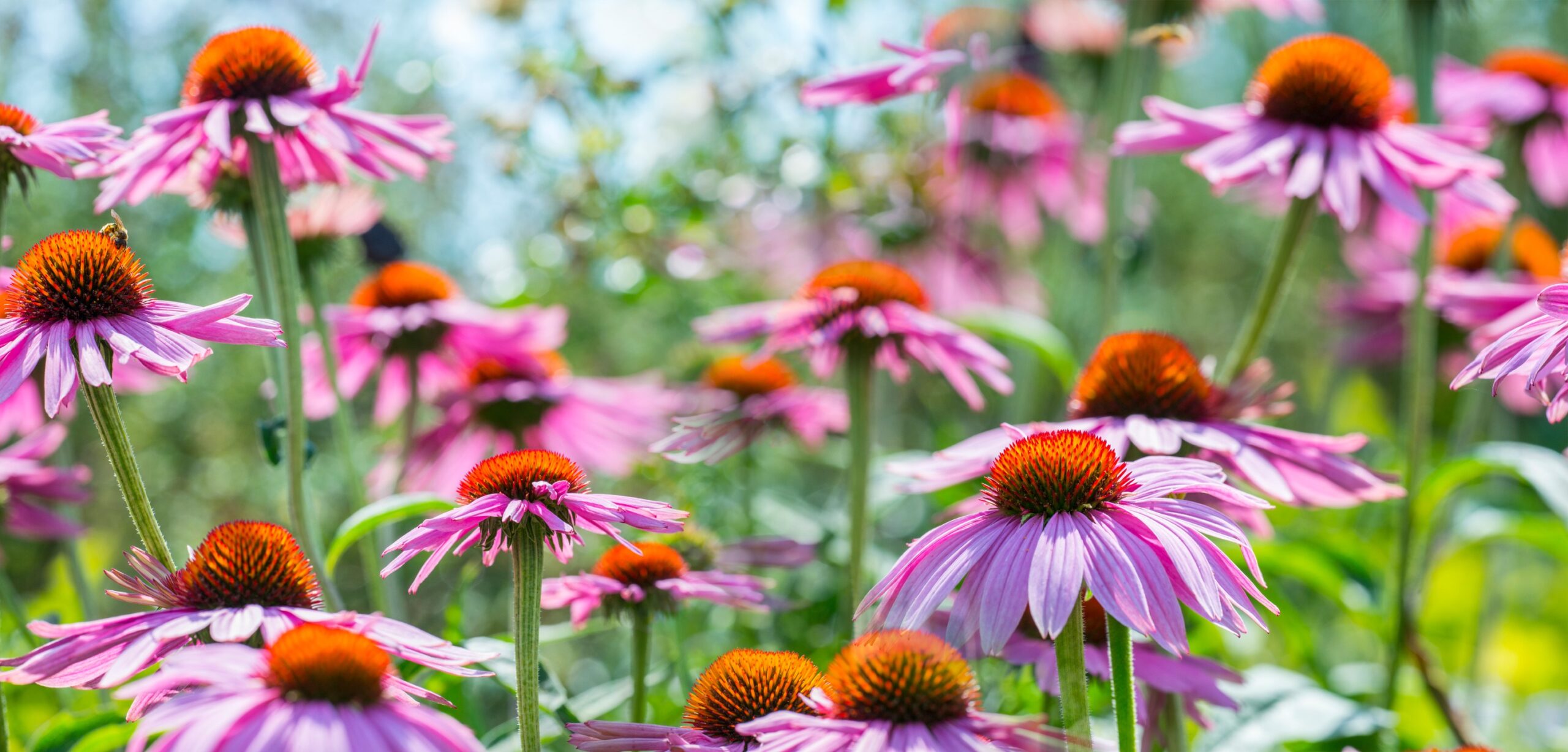Purple coneflower, scientifically known as Echinacea purpurea, is a stunning perennial flower that adds a pop of color and wildlife-friendly blooms to any garden. With its distinctive daisy-like petals and cone-shaped center, the purple coneflower not only enhances the visual appeal of your landscape but also attracts butterflies, bees, and other pollinators.
If you’re interested in growing these captivating plants in your garden, this article will provide you with essential tips and guidelines for successful purple coneflower cultivation.
Facts about Purple Coneflowers
Purple coneflowers are not only visually captivating, but they also possess some impressive survival skills, making them a great choice for gardens in drier regions. These resilient plants are known for being exceptional drought tolerant plants.
Even during periods of limited rainfall or in hot, dry conditions, purple coneflowers can thrive. Their deep taproots allow them to access moisture deep within the soil, and their sturdy foliage and waxy leaves help minimize water loss through evaporation.
This unique adaptation allows purple coneflowers to conserve water and maintain their vibrant blooms even when faced with water scarcity. So, if you live in an area with limited access to water or simply want to cultivate a garden that requires less maintenance, purple coneflowers are an excellent choice for achieving beauty and color while conserving water resources.

Purple coneflowers are native to Texas.
Choosing the Right Location
Purple coneflowers thrive best in full sun. Select a location in your garden that receives at least six to eight hours of direct sunlight each day. Adequate sunlight promotes healthy growth, abundant blooms, and strong stems. Additionally, ensure the chosen spot has well-draining soil to prevent waterlogged conditions that can lead to root rot.
Our team of experts would love to help you with landscape design and installation to brighten up your outdoor space.
Soil Preparation
Prepare the soil before planting purple coneflower. These plants prefer slightly acidic to neutral soil with a pH of 6.0 to 7.5. Incorporate organic matter such as compost or well-aged manure into the soil to improve its fertility, moisture retention, and drainage. This will provide a conducive growing environment for the coneflowers and help them establish a strong root system.
Planting Purple Coneflower
The best time to plant purple coneflower is in the spring, after the threat of frost has passed. Dig a hole that is wide and deep enough to accommodate the plant’s root system.
Place the purple coneflower in the hole, ensuring that the roots are spread out and not cramped. Backfill the hole with soil, gently firming it around the base of the plant. Water thoroughly after planting to settle the soil and help the roots establish.
Watering and Maintenance
While purple coneflowers are known for their drought tolerance, they still require regular watering, especially during their initial growth stage. Provide them with about one inch of water per week, either through rainfall or supplemental irrigation.
Once established, purple coneflowers are relatively low-maintenance and can withstand periods of dryness. However, water them during prolonged droughts to keep them healthy and blooming.
Mulching and Weed Control
Apply a layer of organic mulch, such as wood chips or straw, around the base of the purple coneflower plants. Mulching helps conserve soil moisture, suppress weed growth, and regulate soil temperature.
Be sure to keep the mulch pulled back a few inches from the stems to prevent moisture-related diseases. Regularly remove any weeds that may compete with the coneflowers for nutrients and water.
Deadheading and Pruning
To encourage prolonged blooming, deadhead the faded flowers of your purple coneflowers regularly. Simply snip off the spent blooms just above the nearest set of healthy leaves or buds.
Deadheading not only enhances the plant’s appearance but also prevents self-seeding and promotes the production of more blooms. In late winter or early spring, you can also trim back the foliage by a third of its height to rejuvenate the plant.
Pest and Disease Prevention
Purple coneflowers are relatively resistant to pests and diseases. However, they can occasionally be affected by issues such as powdery mildew or aphid infestations. Monitor your plants regularly, and if any problems arise, address them promptly with appropriate organic remedies or consult with a garden professional for recommendations.
Dividing and Propagating
Over time, purple coneflowers may become crowded and less vigorous. To maintain their health and vitality, divide mature plants every two to three years in early spring or fall.
Dig up the clump of plants, carefully separate them into smaller sections, and replant them in well-prepared soil. This process rejuvenates the coneflowers and provides an opportunity to expand and propagate your collection.

Add color to your garden with purple coneflower plants.
Wrapping Up
With these practical tips in mind, you can successfully grow vibrant and captivating purple coneflowers in your garden. These hardy perennials will reward you with their striking blooms, attract beneficial pollinators, and provide you with years of beauty and enjoyment.
So, get ready to welcome these show-stopping flowers and make a colorful statement in your landscape. Contact us for help with planting and mulching.

